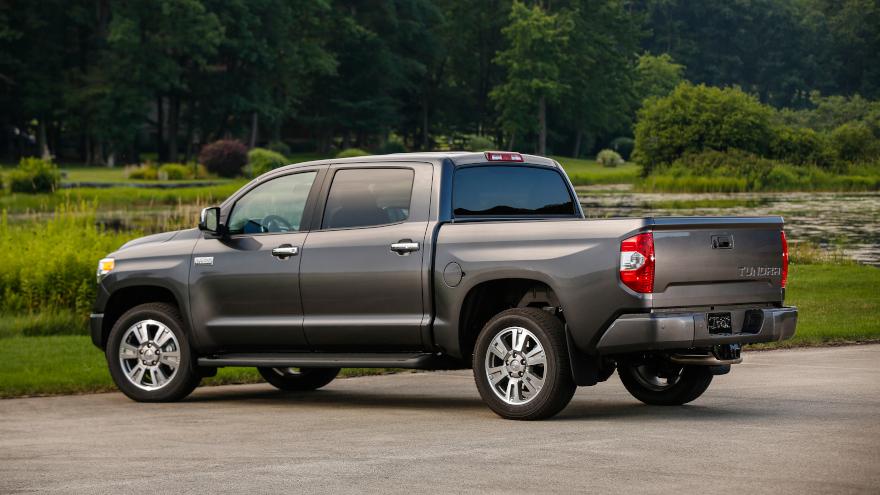If dealers had electricity and internet access, they were buying vehicles at auction last week, no matter how cold it became or strange it appeared to see locations with both palm trees and snow.
Black Book analysts said auction sales rates remained strong last week despite places like the entire state of Texas being under winter storm warnings. Analysts elaborated about how prices, volume, bidding and buying continued to be influenced by the spring market as well as the pandemic.
In the latest Market Update, Black Book explained that no-sales often arrived as a result of “sellers holding very firm to floors and not lack of bidder interest.
“Overall, bidding activity was strong across the country,” analysts continued. “Even with the poor weather plaguing so many locations, the comfort level of buyers utilizing the digital platform kept the sales rates strong.”
“Remarketers continue to report limited volume in their pipeline, so they are holding firm to floors because of this knowledge. In some cases, they are willing to turn away a buyer over as little as $100,” Black Book went on to say.
“Bidding activity was strong from all buyers, with some lanes even seeing the smaller independents squeezing the larger independents out of the bidding with their determination to secure inventory,” analysts added.
With that activity in mind, Black Book reported that overall market values rose 0.43% last week compared to the previous week.
Truck values didn’t climb quite that much, as volume-weight data for trucks, vans and SUVs showed a 0.33% increase. However, on the car side, the value jump was more, as analysts pegged it at 0.61%.
Black Book noticed sporty cars generated the largest increase among cars as the “seasonally sensitive segment” made it four consecutive weeks of rise with value increase of 1.09%.
Another car segment that’s making seasonal moves are compact cars. Black Book reported the popular tax-season segment now is in the midst of five straight weeks of value jumps with the most recent improvement coming in at 0.99%.
Values in only one of the nine car segments softened last week, but analysts said the dip for near luxury cars was only 0.10%.
Over in the truck space, all of those packages from Amazon and other online retails arriving at your door continues to impact two segments.
“Supply of delivery vans continues to be low and this is seen in the gains of the compact and full-size van segments,” analysts said about these models that posted value gains of 1.26% and 0.36%, respectively.
The value increase for full-size trucks jumped significantly this past week as Black Book reported the gain by these popular units climbing from an increase of 0.29% to a rise of 0.46%.
Like cars, trucks only had one segment sustain a value decline last week, according to Black Book’s data. The full-size luxury crossover/SUV segment dipped by 0.15%.
Both Black Book and Cox Automotive reported surging wholesale prices as nearly the entire U.S. wrangles with frigid weather conditions.
While Cox Automotive data is showing that dealers’ retail used inventory might be at what experts see as “normal” levels, Black Book shed light on how used-car managers are keeping their lots filled with units ready to stand tall on the front line.
“Auction sales rates continued with their upward momentum again this past week. Select locations, particularly in the Northeast, are still not seeing the same level of increased demand,” Black Book analysts said in their newest installment of Market Insights. “However, other parts of the country are seeing high levels of success as all types of buyers are actively engaging in the bidding, from your large buyers to smaller independents to franchise.
“The presence of physical bidders is appearing to play a role in the level of success. The lanes with bidders physically present are seeing the highest conversion rates,” Black Book continued.
“In recent weeks, the dealer lanes were experiencing some increases in no-sales, but this past week these same lanes saw more ‘if-bids’ instead of no-sales. This is just another sign of increased demand and the buyers’ willingness to step-up the price they’re willing to pay,” Black Book went on to say.
Meanwhile, along with providing the mid-month reading of the Manheim Used Vehicle Value Index, Cox Automotive also indicated that used supply stable.
Using a rolling seven-day estimate of used retail days’ supply based on vAuto data, Cox Automotive said that used retail supply is at “normal” levels, which is 45 days.
Cox Automotive added that wholesale supply ticked up to 24 days for the most recent seven-day period. What the company considers to be normal supply on the wholesale side is 23 days.
More details about Manheim index
Cox Automotive determined that wholesale used vehicle prices (on a mix-, mileage-, and seasonally adjusted basis) jumped 3.31% during the first 15 days of February compared the first part of January. This movement pushed the mid-month Manheim Used Vehicle Value Index to 168.4, representing a 17.4% increase year-over-year.
Analysts elaborated about the accelerating value pace by examining Manheim Market Report (MMR) prices.
Cox Automotive explained the Three-Year-Old MMR Index — which represents the largest model year cohort at auction — generated a 1.0% cumulative increase during the last two weeks.
Furthermore, analysts added this observation spotted over the first 15 days of February. They said MMR Retention — which is the average difference in price relative to current MMR — averaged 100.9%, and the sales conversion rate also has increased this month.
“Sales efficiency last week was more than 7 percentage points higher than the average sales efficiency in February 2020,” Cox Automotive said in commentary that accompanied the index update.
“The latest trends in the key indicators suggest used vehicle values are likely to continue to see appreciation in the days and weeks ahead,” analysts continued. “Traditionally values do increase each spring, but the increases typically start in March and coincide with the distribution of tax refunds.”
Looking at the data by vehicle segment, each of the six categories Cox Automotive tracks for the index moved higher year-over-year with pickup prices leading the way with a 32.4% spike.
Also rising by double digits were prices for luxury cars (up 16.3%) and CUVs/SUVs (up 13.7%).
Prices for vehicles that often retail during tax season didn’t rise quite so dramatically as Cox Automotive pegged the increase for compact cars at 3.6% and midsize cars at 7.3%.
Van prices moved 8.7% higher, according to Cox Automotive.
And if used-car managers are searching the off-rental lanes for low-mileage units, they might be hard-pressed to find many. Cox Automotive said average mileage for rental risk units crossing the block during the first half of February stood at 52,500 miles; that’s 1% higher compared to a year ago and 5% above what analysts noticed in January.
Not only are rental risk units carrying higher, Cox Automotive reported prices posted during the first 15 days of February are up, too, increasing 8% year-over-year and 1% compared to January.
Black Book’s weekly price analysis
As they do through each installment of Market Insights, Black Book analysts reported how much wholesale prices changed on week-to-week basis.
Overall, Black Book said wholesale prices have increased 0.28% week-over-week with car segments rising 0.39% and truck categories climbing 0.22%, all on a volume-weighted basis.
Of note on the car side, values of compact cars rose more than 1%, the only one of the nine categories to do so.
“Compact cars, a segment that traditionally sees increased demand as a result of spring and tax season buying, has been seeing continual increases in recent weeks. This past week was no different,” Black Book said in the newest Market Insights.
And if dealers can’t find compact cars that find their inventory strategy, they appear to be turning to equivalents in the truck space, creating a combine 1% increase for subcompact and compact crossovers.
“The entry-level crossover segments, subcompact and compact, are gaining steam with increased rates of appreciation this past week. The price point makes them a desirable option for dealers preparing for the spring/tax season market,” Black Book said.
“Subcompact luxury crossovers have been on an upswing in valuations in recent weeks. But this past week, the values took a dip as the available volume on the lanes increased,” analysts added.
It's a seller's market. According to an analysis from assisted commerce car buying app CoPilot, the pandemic has driven new- and used-car inventories to historic lows.
“As a consequence, buyers face limited selection and little leverage in price negotiations in most categories. If a buyer balks on price, sellers know they can find another buyer,” CoPilot said in a news release.
CoPilot just published its February Car Buyer’s Guide, which features CoPilot’s analysis of more than 4 million cars currently for sale online and compares the relative supply and demand for all major vehicle types.
Compared with a year ago, six of eight popular used-vehicle categories are in short supply. The pandemic's historic impact on used and new auto inventories might not abate for months.
Additional analysis from the guide: Inventories of brand-new cars and trucks began a slight stabilization in January. But selection is still limited, CoPilot said. Buyers are paying attention to sticker prices for popular models and often face long waits for delivery.
CoPilot also said buyers should wait for better prices and more selection later this year, if they can.
“But given current inventory levels and supply chain disruptions from the pandemic, it's not clear when that will happen, nor which vehicle categories will be first to replenish,” CoPilot said.
If the buyer can’t wait to buy, he or she should pay attention to current pricing and inventory trends. Consider something less popular than trucks, SUVs and crossovers.
Some relatively good buys are out there, but those are the exception.
CoPilot says it can help buyers find good deals, noting that its proprietary “Google for Cars” search platform features strong vehicle and market data.
The company describes the CoPilot app as a car buyer’s expert partner. It aims to help buyers navigate every step of car shopping and buying. Each user's CoPilot scans more than 46,000 websites several times daily in search of their perfect car. The company’s 600 million analytical pricing models provide insight on what and when to buy, and at what price.
Additional insight from the buyer’s guide shows that the popularity of SUVs continues to surge.
“Suburban parents, please form a line,” the buyer’s guide said, placing SUVs in the “wait to buy” category.
Buyers will find it challenging to negotiate sticker price concessions on popular SUV models right now. Buyers should wait for better selection and more negotiating leverage on price.
CoPilot also puts trucks in the “wait to buy” category, noting that record low interest rates and low gas prices have made trucks tough to find. Wait to buy crossovers as well. They continue to surge in popularity, so selection will be limited awhile longer.
Hatchbacks, on the other hand, are in CoPilot’s “buy now” category, because dealers had too many on their lots in January. It’s a good time to buy a 2021 hatchback. On older models, buyers probably won’t find adequate selection or negotiating flexibility. The highest current demand is for the Toyota Prius, Honda Civic, and Subaru Impreza.
While some dealers might be using some of their available screen time to join the virtual version of NADA Show 2021, managers who are still on their devices tasked with finding used-vehicle inventory continue to confront rising wholesale prices.
And the newest Black Book Market Insights detailed how buying dealers are dipping deeper into their floorplans as a result.
Black Book said its overall volume-weighted data showed prices ticked up 0.14% last week compared to the previous week. The increase for cars (up 0.23%) was a bit stronger than trucks (up 0.9%).
“After a small dip two weeks ago in sales rates due to sellers’ firmness on floors, the buyers returned to buying last week and stepped up to the higher prices,” analysts said in the latest report released on Tuesday, which coincided with the National Automobile Dealers Association beginning its online conference.
“The bidding activity was strong with the only exception being in the Northeastern region where weather appeared to slow the demand,” Black Book continued. “The West Coast also continues to be slower to show strength as the stricter restrictions in that region are slowing the rebound in demand that is being seen in other parts of the country.
“We are hearing more each week in the market about reduced inventory in the pipeline for Q1,” analysts went on to say. “With new-car manufacturing facing supply chain struggles due to the microchip shortage, as well as a possible additional round of stimulus, the expectation is that pricing will remain strong throughout Q1 and into Q2.”
Looking closer at the car segment, Black Book noticed units that often turn nicely during tax season moved higher. Analysts said values of compact cars increased for a third week in a row, posting the largest increase in the car segment at 0.77%.
“Sporty cars, both mainstream and premium, continued to show signs of spring with another week of gains,” said analysts, who mentioned values in the sporty car segment rose 0.48% last week while value increases for premium sporty cars slowed but still edged up 0.07% a week ago.
Also of note, Black Book spotted a 0.22% value gain for prestige luxury cars, halting a streak of 22 consecutive weeks of declines.
Over in the truck arena, analysts mentioned values for full-size pickups increased 0.30% last week after rising just 0.09% during the prior week.
“Full-size vans are showing considerable strength as the volume in the segment remains low,” Black Book said.
“The mainstream crossover segments, subcompact and compact, are showing consistent week-over-week gains as this price point fits well into the traditional spring market demand,” analysts added.
Coinciding with Black Book releasing its first index reading of the year, Cox Automotive reported the latest upward moves of the Manheim Used Vehicle Value Index; similar to what the analyst team at J.D. Power Valuation Services spotted, too.
Cox Automotive indicated that wholesale used-vehicle prices (on a mix-, mileage-, and seasonally adjusted basis) rose 1.23% month-over-month in January, pushing the latest Manheim index reading to 163.0.
The index now sits 15.1% higher than a year ago, just a few ticks away from its all-time high of 163.7 set in August.
Furthermore, Cox Automotive mentioned that Manheim Market Report (MMR) prices strengthened as January progressed.
Analysts explained that the 3-year-old MMR Index — which represents the largest model year cohort at auction — increased 0.4% last week, bringing prices even with the start of the year.
“The increase last week was the strongest increase for that week of any year back to 2014,” Cox Automotive said in the commentary that accompanied the latest index update that arrived on Friday.
“Over the month of January, MMR Retention, which is the average difference in price relative to current MMR, averaged 100.4%. The sales conversion rate increased for most of the month,” analysts continued.
Turning back to the index itself, Cox Automotive pointed out that all major market segments generated seasonally adjusted price increases on a year-over-year basis in January.
Leading the way were pickup trucks as prices for those units rose as much as the next two segments in Manheim’s rundown combined. As truck prices spiked 28.7%, prices for luxury cars climbed 16.3%, and prices for SUVs/CUVs rose 12.1%.
Still climbing but not as dramatically were midsize cars (up 6.6%), vans (up 4.5%) and compact cars (up 2.0%).
Not to be left out of the wholesale-price climbing parade, Cox Automotive said that its Manheim data showed the average price for rental risk units sold at auction in January moved higher, too.
The January price increase for those off-rental models moved 8% higher year-over-year and 3% compared to December.
Analysts added the while off-rental vehicle are fetching higher prices, the average mileage for those units in January softened to 49,900 miles, representing a 3% dip versus a year ago and 4% decline month-over-month.
With dealers having to pay higher prices in January, how are their inventory levels looking now? Cox Automotive addressed that topic, too, by leveraging information from another segment of its service-provider portfolio.
Using a rolling seven-day estimate of used retail days’ supply based on vAuto data, analysts recapped that used retail supply peaked at 115 days on April 8. Analysts said normal used retail supply typically is about 44 days.
For January, Cox Automotive discovered dealer inventory finished the month at 39 days.
And for dealers who want to bulk up on inventory no matter the price, Cox Automotive added that the wholesale market finished January with 25 days’ worth of inventory, slightly above what it deems to be the normal level of 23 days.
For comparison, just like when dealer inventory hit a crescendo, analysts estimated that wholesale supply plateaued at 149 days on April 9.
J.D. Power wholesale metrics move higher, too
The J.D. Power Valuation Services team is seeing rising wholesale prices, as well. Weekly data arrived on Thursday via its Used Market Update compiled by senior manager of market insights David Paris.
During each of the last two weeks of January, ending on Jan. 24 and then Jan. 31, Paris reported that wholesale auction prices rose 0.6% during each of those stanzas, extending the longest streak of week-over-week price gains since August.
Thanks to a streak of five consecutive weeks filled with increases, Paris indicated that wholesale prices are now only 8% lower than the peak established in the J.D. Power Valuation Services data set in August.
Looking deeper into the latest weekly data beginning first in the mainstream market, Paris said small-car prices rose, increasing 3.0%. Prices for large pickups, large SUVs and midsize vans ticked up, too, as Paris indicated each increased 1%.
“On the premium side, prices weren’t quite as strong as their mainstream counterparts, price movement was mixed,” Paris said in the latest report. “In general, small and midsize SUV/car prices were positive for the week, while compact and large SUV/car prices were flat to down slightly.”
Despite the price rise, J.D. Power Valuation Services indicated that sales activities in the wholesale world are remaining in the 80,000 to 90,000-unit level
Paris reported that wholesale auction sales of vehicles up to 8 years old reached approximately 86,000 units during the week ending Jan. 31. He pointed out that’s below year-ago volume, which was approximately 112,000 units
“Wholesale sales continue to run approximately 25% to 35% below prior-year levels, which is helping keep used prices strong,” he said.
Now to what dealers might want to know most. What’s going to be happening next with regard to wholesale prices and volume? Paris closed the latest Used Market Update with his newest projections.
“In 2021, used prices are expected to remain near historic levels as pandemic-related macro-economic headwinds remain in place. By year’s end, prices in Q4 2021 are expected to be essentially flat with where prices were in Q4 2020 and will remain higher than pre-virus levels,” Paris said.
“It is important to note, however, that while the outlook remains optimistic, there remains a great deal of uncertainty surrounding the effect of virus outbreaks, vaccine roll out, federal stimulus, employment conditions, new-vehicle production constraints, as well as the ongoing semiconductor (microchip) shortage on the new side of the market,” he continued.
“Given these unknowns, a heightened degree of market volatility should be expected,” Paris added.
Fueled in part by several vehicle segments showing value rebounds, Black Book reported on Wednesday that its Used Vehicle Retention Index for January ticked up month-over-month, prompting experts to declare spring’s arrival in the lanes (albeit not in the chilly, post-Groundhog Day outdoors).
With values for two particular vehicle segments rising more than $80 during the closing week of January, Black Book said its first index reading of 2021 came in at 128.9, edging up by 0.1 points from the December mark of 128.8.
“With the expected improvements in used-retail demand and shortages of new inventory, the overall used wholesale market was strong in January,”, Black Book senior vice president of data science and analytics Alex Yurchenko said in a news release that accompanied the latest index update.
“The spring market came earlier than before this year with wholesale prices actually increasing during the last week of January,” Yurchenko continued. “Full-size pickup trucks remained strong with the index for that segment increasing by 3.2 points. Early tax season preparations seemed to drive sub-compact and compact car segments’ indices up by 0.8 and 2.9 points, respectively.”
Released on Tuesday, the latest Market Insights from Black Book showed week-over-week gains not only for those full-size pickups as well as compact and sub-compact cars. But analysts also spotted notable week-over-week rises for full-size cars (up $89) and subcompact luxury crossovers (up $83), too.
While volume-weighted information showed overall truck values stayed flat week-over-week, Black Book reported that overall car values rose 0.23% when using that comparison. Analysts elaborated even more about a specific part of the car world.
“Sporty cars, both mainstream and premium, saw signs of spring this past week with increasing values,” they said in the latest Market Insights. “Premium sporty cars have had only minimal decreases over the past 14 weeks, but sporty cars had 22 weeks of declines for a 0.51% average rate of weekly change.
“Traditionally, the sporty car segment begins to show strengthening in February,” analysts added.
Whether dealers are scouring the lanes for those sporty cars or cost-efficient options for budget-conscious buyers, Black Book reported that the auction hammer has been active.
“Sales rates have been on a continual climb in recent weeks, but last week there was a small decline as sellers held firm to floors,” analysts said.
“The decline in sales rates was not due to a lack of interest by buyers,” they continued. “The bidding activity on the lanes was very active last week with some deals being passed over as little as $300.”
Also playing a role in the latest value movements is volume, which Black Book recapped in its latest Market Insights, as well.
“Wholesale volume has shown improvement to start the year, but this past week overall available inventory offered for sale showed signs of once again declining,” analysts said. “However, levels are still above the shortages seen last summer. Remarketers are estimating that their available inventory in the pipeline for Q1 is lower than normal.
“With remarketers knowledge of limited supply in the pipeline and increased retail demand, they are raising their floors and planning to hold firm,” analysts went on to say.
What happens in the coming weeks will be recapped in the next Black Book Used Vehicle Retention Index, which is calculated using Black Book’s published wholesale average value on 2- to 6-year-old used vehicles, as percent of original typically equipped MSRP. It is weighted based on registration volume and adjusted for seasonality, vehicle age, mileage and condition.
The index dates to January 2005 when Black Book published a benchmark index value of 100.0 for the market.
During 2008, the index dropped by 14.1% while during 2016, the index fell by just 6.4%. During 2011, the index rose strongly from 113.3 to 123.0 by the end of the year as the economy picked up steam and used vehicle values rose higher.
The index continued to remain relatively stable, rising slightly until May 2014 when it hit a peak of 128.1.
To obtain a copy of the latest Black Book Wholesale Value Index, go to this website.
A new player has emerged in the competitive landscape of automotive research and classifieds sites.
CarEdge.com has completed Phase I of its vehicle research and listings website, saying that the new version of the site features vehicle cost analysis on more than 250 vehicle models from more than 30 vehicle manufacturers.
The analysis includes resale values, depreciation rates, maintenance and repair expenses, and insurance costs.
The company also introduced its Total Cost to Own Dashboard, which provides an overview of all significant vehicle ownership and operating costs.
CarEdge.com describes itself as an advocate for car shoppers that provides auto buyers with analytical tools to make more-informed decisions in their vehicle purchasing process.
In a news release, the company said it aims to compete with the likes of Edmunds, Kelley Blue Book, J.D. Power, Black Book and Consumers Reports.
Explaining how its process works, CarEdge said it ranks vehicles on multiple metrics, including depreciation, maintenance and insurance costs, and total cost of ownership, saying that it does so to offer vehicle shoppers further transparency.
The rankings display the best makes and models in each category, and also what it calculates as the worst.
For auto consumers, the website also provides a depreciation forecast calculator, and a depreciation comparison tool.
It also provides a loan calculator, which displays a pro-forma loan balance versus the depreciating value of a vehicle.
CarEdge continues to provide auto dealers with free customer leads for site visitors who ask about any of the 4 million-plus listings on its website. The company says it does so to remain objective and unbiased in its analysis and rankings.
The company says that policy is consistent with its mission of advocating for automotive consumers, noting that it does not receiving revenues for those leads. The company does not sell its customer data. Instead, it relies on general advertising revenue from site traffic.
CarEdge also provides its vehicle analytics and data to other auto- and financial-related entities, which have an interest in depreciation data and overall vehicle operating costs.
The company believes that shifting consumer sentiments toward value shopping, increased transparency, and heightened economic uncertainty will benefit what the company says is its consumer-focused business model.
CarEdge president, Scott Baker, said the phase I completion of its site represents a milestone in the company’s development.
“Our team, and our investors, continue to be very encouraged with the interest that we are receiving from vehicle shoppers, and with our consumer-advocacy approach,” Baker said in a news release.
Baker also said, “Our data and analysis are also being validated in the business community, as there is strong interest in our research and data. We have achieved a lot recently, and we are all excited about executing on the next phase of our strategic plan.”
The company also said its website reached 1.3 million unique visitors and 6 million page views, including website traffic from CarEdge.com’s predecessor site, UsedFirst.com.
Wholesale market experts from Black Book and J.D. Power both spotted strengthening sales volume happening in the auction lanes.
J.D. Power called it a return to the “new” normal when wholesale auction sales of vehicles up to 8 years old reached approximately 78,000 units during the week ending Jan. 10. That volume figure came after J.D. Power reported in its Used Market Update released Friday that auction sales came in below 50,000 units during each of the prior two weeks.
Despite the improvement, J.D. Power indicated the volume reading remains below what analysts observed at the start of 2020 when sales volume reached nearly 116,000 units.
“Wholesale sales continue to run approximately 30% to 35% below prior-year levels, which is helping keep prices strong,” J.D. Power said.
The team at Black Book didn’t use the same moniker as J.D. Power to summarize the volume rebound analysts there spotted, as well. But Black Book shared in its latest Market Update released on Tuesday that dealership retail gains resulted in more units bringing out the auction hammer.
“Over the last several weeks of 2020, we saw wholesale sold volume decrease as dealers need for inventory declined as a result of weaker used retail demand. As has been the case, the drops in volume were not uniform across all auctions and platforms,” Black Book said.
“In the first full week of 2021, the average conversion rate at auctions improved. This is mainly due to stronger retail demand to finish out 2020, which resulted in dealers needing to return to the lanes to secure inventory,” analysts continued. “The improvement trend continued last week, with another increase in the success rate, particularly driven by the increase in activity at auctions in the Southern states.”
With President Joe Biden just inaugurated on Wednesday and the possibility of more stimulus payments landing with consumers, Black Book described what atmosphere that’s creating at auctions and dealerships.
“Uncertainty remains around the future of a traditional spring/tax season market this year,” Black Book said in its latest update. “Early sentiments by dealers are optimistic and auction performance of the traditional spring market vehicles, those under $12,000, have seen an uptick in demand in the last two weeks.”
Wholesale price observations
Depending on which vehicle segment — and which analyst team is compiling the data — prices are moving in many directions.
Beginning again with J.D. Power, analysts there said wholesale auction prices continued to rise during the week ending Jan. 10 after increasing 1.6% the week ending Jan. 3.
J.D. Power determined wholesale prices improved by an additional 1.1%, marking the first time that used prices have increased for two consecutive weeks in its data set since early August.
Analysts pointed out that wholesale prices are now 24% higher than their trough set in April and 5% above their level at the beginning of March.
J.D. Power indicated that wholesale prices for mainstream segments climbed throughout that space, with small cars leading the way with a price rise of more than 3%. Prices for compact and large cars increased 1.3%, and prices for midsize cars rose 1.5%, according to J.D. Power, which added that price upticks for large pickups weren’t far off that pace at 1.2%.
Prices for always popular SUVs didn’t move as much in J.D. Power’s data set as analysts pegged the increase for midsize SUVs at 1% and for small SUVs at just 0.4%
“On the premium side, prices weren’t quite as strong as their mass-market counterparts, though price movement was generally positive,” J.D. Power added.
Over at Black Book, analysts there said volume-weighted data showed overall wholesale prices declining last week for the 19th week in a row. However, the dip for both cars (down 0.52%) and trucks (down 0.20%) wasn’t as significant as the previous week when they came in at 0.91% and 0.74%, respectively.
“The near-luxury and luxury car segments saw steeper declines in prices this past week as available supply increased on the lanes and remarketers lowered their floors,” Black Book said. “However, volume remains low in the premium sporty and prestige luxury car segments which is continuing to see lower than normal weekly changes.
“The smaller car segments — subcompact and compact — have been on a race to the bottom over the last several weeks,” analysts continued. “But this past week, the compact car segment experienced the lowest weekly change for this segment since the week of Thanksgiving.”
Also of note, Black Book mentioned that analysts are continuing to see softening in values in the 1500 level trucks, but the larger 2500 and 3500 level units remain strong as prices for those more robust pickups edged just 0.20% lower last week.
“Full-size crossover supply remains tight, and with low fuel prices, the demand has remained strong. This was the second week in a row of an increase in values,” Black Book said.
Perhaps the wholesale industry just ran out of collective gas during the second half of December after it already had experienced so many unprecedented challenges during a year no one is likely to forget.
Black Book said the last two weeks of 2020 “were fairly quiet on the auction lanes,” as analysts not only shared some closing observations about the year, but also a few initial suspicions about value and volume trends to begin 2021.
“Activity did increase marginally the week of New Year’s (Day) compared to the week prior with a small increase in the overall sales rate. However, many lanes had smaller levels of inventory offered for sale,” Black Book said in its latest installment of COVID-19 Market Insights released on Tuesday.
“Auctioneers had a tough job last week with many lanes requiring auctioneers to start $1,500 to $2,000 below market value to get the bids going to get a successful sale,” analysts continued.
“For many remarketers that we have spoken to, it is their sentiment that inventories are low so they are willing to wait to see if January will bring back the demand that was experienced over the summer,” analysts went on to say. “However, they do have mixed feelings on expectations of a traditional tax/spring season market bump.”
Black Book pointed out that demand weakened as the year culminated, stating the auction sales rate decreased about 15% in the closing weeks of 2020 compared to summertime.
On the retail front, Black Book highlighted that franchised dealers are reporting a “healthy” December, especially stores that had full-size trucks in their new-model inventory.
“The enticing incentives helped them to close out the year on a positive note,” analysts said in the report.
Used-vehicle retailing turned cold like the weather, according to Black Book’s sources in the retail world. But analysts pointed out that dealers suspect a potential turnaround warmed by fuel coming from the federal government.
“Sentiment is starting to change with the stimulus money beginning to be deposited into consumers’ bank accounts. Dealers are hoping this results in a strong January,” Black Book said.
However, when considering all factors, consignors might not see as favorable beginning to 2021 as other segments of the automotive industry.
“With expected weaker retail demand, even with the second (much smaller) federal stimulus, together with a projected increase of used inventory, we forecast a higher than seasonal drop in wholesale prices this winter,” Black Book said.
“It is worth noting that after record-breaking increases in wholesale prices over the summer, we are still well above pre-COVID-19 prices, so the projected drop over the winter months will simply get us back to the baseline,” analysts added.
Latest value movements
As they do in every installment of their COVID-19 Market Insights, analysts tracked the latest value movements on a weekly basis.
According to Black Book’s volume-weighted data, overall car segment values softened 0.70% over the last week, an increase from the depreciation reading of 0.62% recorded during the prior week.
The streak of value declines for subcompact and compact cars now is halfway to the point of when a baby is conceived to being born. With the streak now at 19 weeks, analysts found that the decline run for compact cars continued with a drop of 0.84% with the drop for subcompact cars being even more at 0.92%.
“Premium sporty cars have continued to be the anomaly for the car segments throughout the pandemic with another week of limited declines,” Black Book said. In contrast to the smaller mainstream car segments, this segment has only had 11 weeks of declines for an average weekly (decrease) of 0.15%.”
Over in the truck department, Black Book’s volume-weighted information showed that values in the overall truck segment (including pickups, SUVs and vans) declined 0.33% last week. That’s slightly less than what analysts spotted a week earlier when the value drop came in at 0.35%.
Not quite to the length registered by subcompact and compact cars, Black Book still pointed out how the value decline for minivans is significant. These units now have dropped for 17 consecutive weeks with them again being the leader among trucks with a drop of 0.78%. The average decline for minivans during this stretch is 0.72% per week.
Also of note, Black Book noticed that full-size trucks slowed their value decline to finish 2020, slicing a 0.40% drop down to 0.21% during the last week of the year.
If consignors were football teams, how they’re approaching the current wholesale market might be similar to how the gridiron participants can move the ball down the field. Some football teams methodically run the ball, gaining yards in small chunks. Other squads throw the ball deep downfield to get significant yardage quickly.
Consignors appear to be behaving similarly at the auction based on the anecdotes shared by Black Book through its latest COVID-19 Market Insights released on Tuesday.
“Remarketing strategies are widely varying right now with some remarketers finding themselves low on volume and holding firm to floors, while others are seeing volumes rise and are finding the need to aggressively sell off units,” Black Book said in the newest report.
“Overall sales rates this past week increased with many remarketers ready to strike deals with dealers,” analysts continued. “The auctions with buyers and sellers physically present are able to take advantage of the situation and have successful in-lane negotiating.”
Black Book reiterated that dealerships are seeing softer retail demand as the holiday season ramps up. Managers who are adding store inventory are being selective about which units they might pluck out of the sales.
“High-condition scores and low-mileage units continue to garner the most attention on the lanes,” Black Book said. “But as new retail units are seeing increases in incentives levels, it is starting to show signs of softening the used market.”
Analysts added one other component that’s influencing how aggressive consignors might be.
“Repossessions still aren’t showing up in any volume on the lanes, but we are starting to see voluntary repossessions available in small quantities,” analysts said.
“This is traditionally a slower time of year for repossessions so the expectation is that portion of the used market will pick up in 2021,” analysts added.
Latest value movements
Also in the latest COVID-19 Market Insights, Black Book shared its usual rundown of wholesale value movements.
Beginning with volume-weighted car information, analysts indicated overall car segment values decreased 0.80% during the past week, a slight increase above the previous week’s depreciation reading of 0.78%.
Black Book pointed out that values for compact cars now have declined for 16 weeks in a row. Analysts computed the average weekly depreciation rate during that stretch is “a staggering” 0.93%.
Analysts also noticed that the traditional seasonal decline is the sporty car segment has intensified since the middle of October. This past week, sporty cars softened by 1.05%.
“The niche, low volume premium sporty car segment has been an outlier throughout the pandemic with much smaller weekly changes compared to the overall market and compared to traditional seasonal behavior,” Black Book said about that particular segment that has sustained only an average weekly decline of 0.16% during the past eight weeks.
Moving along to the truck space, Black Book’s volume-weighted data showed that overall truck segment values — including pickups, SUVs and vans — declined 0.42% last week. That wasn’t quite the drop analysts spotted a week earlier when the drop came in at 0.68%.
While not quite at the pace posted by compact cars, Black Book said values of minivans are in the midst of a significant stretch of decreases, too. That streak now is at 14 consecutive weeks with an average weekly drop of 0.70%, according to analysts.
Black Book again mentioned the increased demand for delivery vans brought about by the pandemic and increased online shopping continues to give strength to the full-size van segment, which is seeing lower than normal weekly declines. This past week, the dip was just 0.16%.
Finally, the value drop for full-size trucks came in at 0.46% last week and below the previous week’s decline of 0.57%. “these are declines more on the level of what we saw in the early days of the pandemic,” analysts said.












